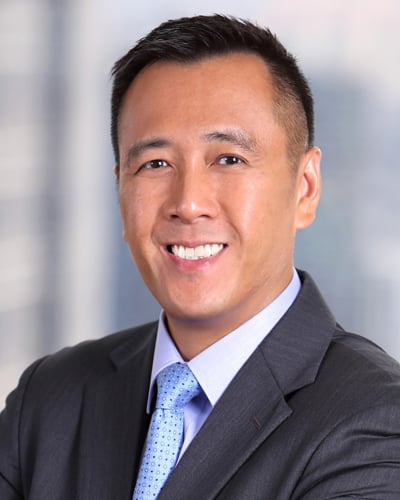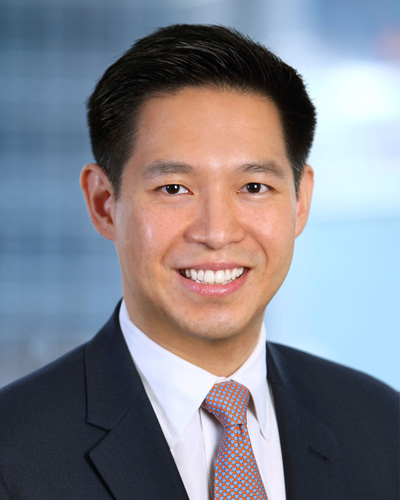In this Ropes & Gray podcast, asset management partners Isabel Dische, Vince Ip and Chune Loong Lum discuss how both GPs and LPs are thinking about the GP-LP relationship in light of the current choppy fundraising climate and broader global macro trends. How can GPs lure committed LP capital while preserving flexibility for their longer-term success? How can LPs ensure GPs deploy their capital with appropriate discipline? What are the most meaningful “asks” an LP may want to make as it negotiates new fund commitments?
Transcript:
Speaker: Hello, and thank you for joining us today on this Ropes & Gray podcast, the latest in our series of podcasts and webinars focused on topics of interest for asset managers and institutional investors. Joining me today are my asset management colleagues, Isabel Dische, Vince Ip and Chune Loong Lum, based in New York and Hong Kong.
With a choppy fundraising climate and uncertainty about broader global macro trends, both GPs and LPs are nervous these days. Many of our GP clients are asking how they can lure committed LP capital while preserving flexibility for their longer-term success. At the same time, LPs are particularly focused on how they can ensure GPs deploy their capital with appropriate discipline and are asking what the most meaningful requests may be as they negotiate new fund commitments.
Chune Loong Lum: Many GPs remain nervous about the current fundraising climate. Bluntly, it is harder to raise capital. Some LPs are liquidity-constrained because of the recent mismatch between fundraising and exits—as GPs are coming to market with new and larger funds more frequently, the pace of exits has not kept pace. Further, some LPs’ portfolio are skewed away from their target allocations as between public and private investments because of recent declines in the public markets, particularly as private valuations tend to lag public company marks.
Speaker: Depending on where an LP is based, currency rates can also play a role. For example, with the decline in the British pound, some UK LPs have found themselves comparatively capital shy in terms of their available capital for commitments to non-GBP denominated funds. Simultaneously, many GPs are finding both that it is taking longer to get from their first closing to their targets and that they are having to raise capital from more LPs to reach a given target. The challenges faced by a GP depend on the sector and historic returns, among other factors, but as a general matter, most GPs would admit it’s harder to raise capital today than it has been in the recent past.
Chune Loong Lum: And therein lies a quandary for GPs: What concessions can they make that are likely to help lure dependable capital commitments without making promises that hurt the larger platform. Are there structural options a GP can offer to nudge LPs toward those longer-term commitments?
A few “carrots” that GPs have found useful in the past have included (i) access to co-invest opportunities, whether on a deal-by-deal basis or through dedicated overflow or sidecar vehicles, and (ii) economic enticements such as early closer discounts or size-based fee discounts. And we are certainly seeing GPs offer both types of arrangements to significant LPs, but quietly we also are seeing GPs ask if they should be offering more to lure commitments from certain “high value” LPs. All of my GP clients—whether larger and more established sponsors, smaller sponsors, or sponsors marketing newer strategies—are keenly focused on how they can not only attract capital, but attract those commitments from LPs whose participation in a fund may help with fundraising and/or whose capital they anticipate to be “stickier” over the years to come.
Isabel Dische: Bluntly, larger LPs are often expecting both economic concessions (particularly if they’re coming in at the first closing of a fund) and a certain level of co-invest allocation. Some of the larger LPs may be comfortable from time to time relying on soft comfort with respect to co-invest allocation, taking comfort that the GP is more likely to reach out to them to offer co-invest opportunities, both because the value of maintaining a relationship with a larger LP dwarfs that of keeping a smaller LP happy, and also because as a practical matter, many of the larger LPs have the institutional resources to evaluate co-invest opportunities quickly, as well as the capital to execute on such opportunities.
Some GPs are, however, trying to lock in their relationship with an LP through how they structure co-invest priority provisions in the LP’s side letter. For example, a GP may condition a certain volume of co-invest opportunities upon the LP’s investing at least a certain threshold with the platform over a few years. These provisions can be very granular: If the LP invests at least $250 million with the platform, for example—and note these provisions are often phrased with respect to the broader platform rather than a particular fund, as ultimately the GP is focused on raising reliable capital more generally—then the GP will guarantee co-invest capacity of at least an agreed upon percentage of the LP’s commitments to the platform. It’s effectively a back-door way to a fee discount for the LP. In rare cases, the GP also will condition economics with respect to the co-invests on the LPs having made those commitments to the platform—for example, expressly stating that if the LP doesn’t make those commitments by a set date, any co-invests after that date might bear economics. (Note that these “penalty” provisions typically do not apply to co-invests that are consummated before the deadline, so they serve only to caution the LP that if it doesn’t make the targeted commitments, co-investing may not be as attractive.)
Speaker: Agreed—these provisions can be mutually beneficial. From an LP’s perspective, if the relationship proceeds as anticipated, the overall economics and exposure are improved. And from a GP’s perspective, this can be a way to incentivize an LP to commit more broadly to the platform (a softer form of requirements we’ve seen GPs impose in the past where any LP that wants allocation to a “hot” fund also needs to make a commitment to a fledgling strategy).
Isabel Dische: While still not common, we are also seeing more requests for stapled commitments by GPs as secondary buyers acquire interests in older funds or even stapled commitments in connection with access to a co-invest opportunity.
Vince Ip: We have also noticed that in this environment, many GPs have been able to successfully engage with LPs to secure commitments (or faster re-ups) through a demonstrated focus on portfolio monitoring. This has been particularly important in emerging markets such as China, which have been roiled by macro and geopolitical uncertainty for some time. Whether this means more detailed portfolio reporting or simply just more frequent update calls with LPs, these steps can go a long way to giving LPs confidence that the GP has the right skill set to ride out a bumpy economic environment.
Flipping hats for a moment, a number of our LP clients have been particularly focused on what they should ask for when negotiating new fund commitments. There’s been a general erosion of terms in favor of GPs over LPs in recent years, and with the current fundraising climate, LPs are asking us where they should focus their efforts to reverse some of that slippage. For example, in recent years, some of the core tax protections in LPAs have been softened materially and we are seeing LPs start to press for more protections. Likewise, LPs are demanding more oversight over conflict transactions—asking that related party transactions be presented to a fund’s LPAC for approval rather than a weaker standard where LPAC consent is at the GP’s discretion.
Speaker: Many of our LP clients are also particularly focused on including protections to ensure the sponsor is properly disciplined, particularly given the uncertain and rapidly evolving macro climate. For example, some of our clients have been worried about the pace at which GPs have been deploying capital, in particular, given concerns about a potential recession, and have been including speed bumps to manage the risk of an overly exuberant GP. Another commercial item that’s been receiving much more focus recently is borrowing, in particular, given the rise in interest rates over the past year, and many LPs are more focused on the use of leverage by funds, with particular focus on how leverage caps are defined (as some sponsors have tried in recent years to exclude certain types of leverage from the caps entirely), and whether the proposed caps are appropriate for the anticipated strategy, both in terms of time and amount.
Chune Loong Lum: Agreed. In light of higher borrowing costs, the relative attractiveness of using leverage has diminished, and some of my LP clients have begun to attempt to scale back some of the more permissive borrowing abilities of their GPs. However, one aspect which has remained relatively stable is the prevalence of GPs’ ability to extend a fund’s term for a year or two without requiring LPs’ consent. With the expectation of an increasingly unpredictable exit environment, GPs continue to want certain flexibility to time and execute exits, and LPs have generally been understanding and accommodating. Through clear communications of the rationale underpinning certain fund terms, we have seen that it is possible for GPs and LPs to arrive at mutually satisfactory outcomes, even amidst a challenging fundraising environment.
Speaker: Clearly, we’d all agree that navigating these issues in a way that suits both GPs and LPs is in the longer-term interests of both. Thank you, Chune Loong, Isabel and Vince, for joining me today for this discussion, and thank you to our listeners. For more information on the topics that we discussed or other topics of interest to the asset management industry, please visit our website at www.ropesgray.com. And of course, we can help you navigate any of the topics we discussed—please don't hesitate to get in touch. You can also subscribe and listen to this series wherever you regularly listen to podcasts, including on Apple, Google and Spotify. Thanks again for listening.
Speakers


Stay Up To Date with Ropes & Gray
Ropes & Gray attorneys provide timely analysis on legal developments, court decisions and changes in legislation and regulations.
Stay in the loop with all things Ropes & Gray, and find out more about our people, culture, initiatives and everything that’s happening.
We regularly notify our clients and contacts of significant legal developments, news, webinars and teleconferences that affect their industries.



